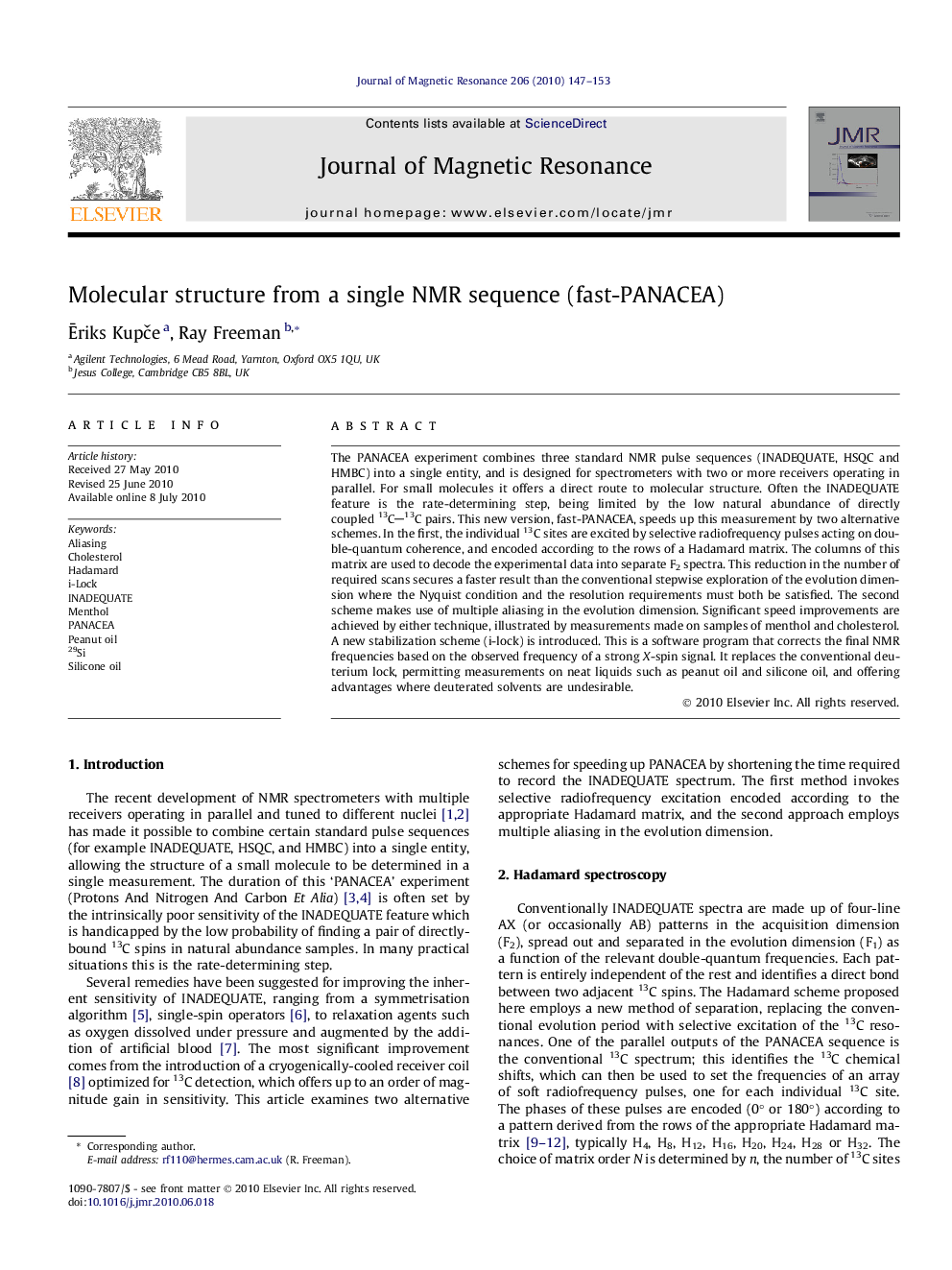| Article ID | Journal | Published Year | Pages | File Type |
|---|---|---|---|---|
| 5406606 | Journal of Magnetic Resonance | 2010 | 7 Pages |
Abstract
The PANACEA experiment combines three standard NMR pulse sequences (INADEQUATE, HSQC and HMBC) into a single entity, and is designed for spectrometers with two or more receivers operating in parallel. For small molecules it offers a direct route to molecular structure. Often the INADEQUATE feature is the rate-determining step, being limited by the low natural abundance of directly coupled 13C13C pairs. This new version, fast-PANACEA, speeds up this measurement by two alternative schemes. In the first, the individual 13C sites are excited by selective radiofrequency pulses acting on double-quantum coherence, and encoded according to the rows of a Hadamard matrix. The columns of this matrix are used to decode the experimental data into separate F2 spectra. This reduction in the number of required scans secures a faster result than the conventional stepwise exploration of the evolution dimension where the Nyquist condition and the resolution requirements must both be satisfied. The second scheme makes use of multiple aliasing in the evolution dimension. Significant speed improvements are achieved by either technique, illustrated by measurements made on samples of menthol and cholesterol. A new stabilization scheme (i-lock) is introduced. This is a software program that corrects the final NMR frequencies based on the observed frequency of a strong X-spin signal. It replaces the conventional deuterium lock, permitting measurements on neat liquids such as peanut oil and silicone oil, and offering advantages where deuterated solvents are undesirable.
Related Topics
Physical Sciences and Engineering
Chemistry
Physical and Theoretical Chemistry
Authors
Äriks KupÄe, Ray Freeman,
